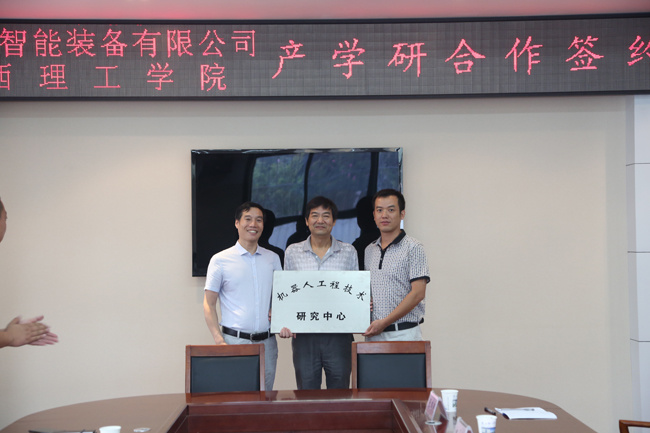R&D
Foreword:
Intelligent equipment is the core of high-end equipment, the forefront of manufacturing equipment, and the foundation of the manufacturing industry. It has become a competitive goal for advanced industrial countries today. In the past half-century, driven by the continuous rise in labor costs and the continuous improvement of automation technology levels, the global intelligent equipment manufacturing industry has developed rapidly.
Against the backdrop of rising labor costs and improved automation equipment technology, the market demand for the automation industry in China has grown rapidly. Data from the "2016 China Automation Market White Paper" shows that the scale of China's automation and industrial control market was 139 billion yuan in 2015, exceeding 150 billion yuan in 2016, and reaching 159.3 billion yuan in 2017.
Intelligent manufacturing equipment, developed on the basis of automation equipment, combines automation equipment, testing technology, control systems, big data, and other technologies, becoming an important development direction for China's equipment industry.
Since the release of the "Equipment Manufacturing Industry Adjustment and Revitalization Plan" in 2009, the state has continuously increased its policy support for the intelligent equipment manufacturing industry. The "Intelligent Manufacturing Development Plan (2016-2020)" issued by the Ministry of Industry and Information Technology in December 2016 proposed that by 2020, more than 60 key technologies and equipment for intelligent manufacturing will be developed to reach the level of similar international products, with a domestic market satisfaction rate exceeding 50%. At the same time, industrial support policies such as the "Implementation Guidelines for the Intelligent Manufacturing Project (2016-2020)" will be successively promulgated to accelerate the development of the industry.
In order to refine and implement "Made in China 2025," the Ministry of Industry and Information Technology, the Development and Reform Commission, the Ministry of Science and Technology, and the Ministry of Finance organized the compilation of five implementation guidelines for innovation projects in manufacturing innovation centers, industrial strengthening, green manufacturing, intelligent manufacturing, and high-end equipment, and officially released them. Among them, the intelligent manufacturing project promotes the intelligent transformation of the manufacturing industry and promotes the industry's advancement to the mid-to-high end; the high-end equipment innovation project focuses on breaking through the industrialization and application of a number of major equipment, providing advanced production tools for the upgrading of various industries.
Currently, domestic intelligent manufacturing equipment is mainly distributed in the Northeast and the Yangtze River Delta regions, where industrial foundations are well-developed. Research and development and production enterprises of intelligent manufacturing equipment centered on CNC machine tools are mainly distributed in Beijing, Liaoning, Jiangsu, Shandong, Zhejiang, Shanghai, Yunnan, and Shaanxi.
As an emerging industry that is being cultivated and grown, China's intelligent manufacturing equipment industry has weak technological innovation capabilities, and core technologies such as new sensing and advanced control are subject to external factors. In the research and development of new technologies and new products, most companies still follow the technological development of advanced foreign enterprises, and there is still a certain gap in technology.
Moreover, the intelligent manufacturing equipment industry started late in China, with a small number of domestic leading enterprises, a small industrial organizational structure, weak competitiveness, and a lack of backbone enterprises with international competitiveness. A few enterprises have developed to a certain strength and can face direct competition from international large enterprises in the domestic market, but the number of enterprises entering the international market competition is still relatively small, and their competitiveness is relatively weak.
The overall scale of the domestic intelligent manufacturing equipment industry is still relatively small, and innovation resources and industrial resources are scattered among central enterprises and school-enterprise collaborations. The industrial system and mechanism are not active, the market development capabilities of enterprises are not strong, and there is a lack of large enterprise groups with innovative spirit and international competitiveness. The current intelligent manufacturing equipment industry needs to strengthen its role in promoting the transformation and upgrading of domestic industries.
Therefore, with the technological upgrading of intelligent manufacturing equipment and the gradual increase in industry concentration, manufacturers who master core technological resources and have comprehensive competitiveness will win out of the competition and occupy a dominant position in the huge intelligent manufacturing equipment market.
Research and Development:

Nobot has always adhered to the concept of technology first and independent research and development, promoting the company's long-term and healthy development through exploration of the R&D model. To this end, Nobot established its own R&D team at its inception in 2013, and the company's R&D building is under construction and is expected to be put into use in October 2018. The company's independently developed non-metallic five-axis machine and horizontal articulated robot have been widely recognized by customers.
Innovation:
A complete quality assurance system has been established, passing the ISO9001 international quality system certification, CE EU safety certification, and ISO14001 environmental management system certification. Four industrial robot R&D centers have been established, cooperation relationships have been established with well-known domestic universities, two robot engineering centers have been established, and an industrial robot experimental system has been established, ensuring the quality of product R&D. 53 national patents and 23 software copyrights have been obtained.



